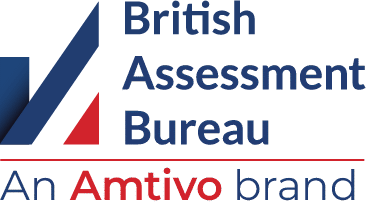In today’s dynamic workplace, occupational health and safety (OH&S) has become a critical aspect of business operations, particularly in the UK where, according to the Health and Safety Executive (HSE), the cost of workplace injury and work-related ill-health exceeded £20 billion in 2021/22. The HSE also reports that, in 2022/3 561,000 workers sustained a non-fatal injury at work.
What Is an ISO 45001 Occupational Health and Safety Management System?
In today’s dynamic workplace, occupational health and safety (OH&S) has become a critical aspect of business operations, particularly in the UK where, according to the Health and Safety Executive (HSE), the cost of workplace injury and work-related ill-health exceeded £20 billion in 2021/22. The HSE also reports that, in 2022/3 561,000 workers sustained a non-fatal injury at work.
An effective OH&S management system not only safeguards employees from workplace hazards but also enhances overall business performance. By implementing an ISO 45001-certified OH&S management system, UK-based organisations can reap many benefits.
Below, we explain the 10 benefits of implementing an Occupational Health and Safety management system.
1. Reduced workplace accidents and illnesses
A well-structured OH&S management system helps identify and mitigate potential hazards, significantly decreasing workplace accidents and illnesses. This translates into fewer lost workdays, lower insurance premiums, and improved employee wellbeing. In the UK the HSE reported 35.2 million working days lost during 2022/23 due to work-related illness and workplace injury.
2. Enhanced productivity and efficiency
By fostering a safer and healthier work environment, an OH&S management system boosts employee morale and motivation, directly contributing to increased productivity and efficiency. Employees feel more confident and engaged when they know their employer prioritises their wellbeing.
3. Improved compliance with UK legislation
Organisations in the UK are obligated to adhere to stringent OH&S regulations, such as the Health and Safety at Work Act 1974 and the Management of Health and Safety at Work Regulations 1999. An OH&S management system provides a structured framework to ensure compliance with all applicable laws and standards, minimising the risk of legal penalties and reputational damage.
4. Reduced insurance costs
Insurance providers often offer lower premiums to UK-based organisations with a proven commitment to OH&S. By demonstrating a proactive approach to risk management, organisations can reduce their overall insurance expenses.
5. Stronger reputation and brand image
A commitment to employee wellbeing and safety enhances an organisation’s reputation and brand image, particularly in the UK. ISO 45001 certification serves as a tangible demonstration of an organisation’s dedication to its employees and their safety.
6. Improved risk management
An OH&S management system establishes a comprehensive risk assessment and management process, enabling UK-based organisations to proactively identify, assess, and control potential hazards before they lead to accidents or illnesses.
7. Enhanced employee engagement and morale
A safe and healthy work environment fosters a sense of trust and appreciation among employees, leading to increased engagement, morale, and job satisfaction. Employees feel valued and respected when their wellbeing is prioritised. In the UK, a 2022 survey by the HSE found that 45% of workers reported feeling stressed at work due to work-related factors.
8. Attracting and retaining talent
A strong reputation for OH&S makes an organisation an attractive employer, especially in UK industries with higher risk profiles, such as construction or manufacturing. ISO 45001 certification signals to potential employees that the organisation takes their safety seriously.
9. Improved decision-making
An OH&S management system provides a data-driven approach to decision-making, enabling UK-based organisations to make informed choices regarding workplace safety and risk management.
10. Continuous improvement
An OH&S management system is not a static process; it encourages continuous improvement and adaptation to evolving safety standards and industry best practices.
Implementing an occupational health and safety management system is an investment in an organisation’s most valuable asset – its employees. By prioritising the wellbeing of its workforce, an organisation not only protects its employees but also gets to enjoy numerous benefits that enhance its overall performance, reputation, and long-term success in the UK.
If you are considering ISO 45001 for your organisation, British Assessment Bureau can support you whether you are a beginner or an expert. We offer a range of ISO 45001 training courses and ISO 45001 resources.


